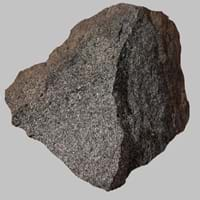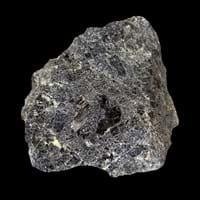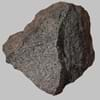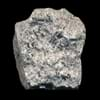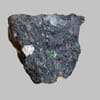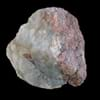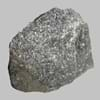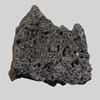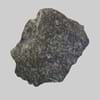Definition
Gabbro is an intrusive igneous rock which is chemically equivalent to plutonic Basalt
Hornblendite is a type of igneous plutonic rock consisting mainly of amphibole hornblende and is a type of Amphibolite rock
Discoverer
Christian Leopold von Buch
Unknown
Etymology
From Latin glaber bare, smooth, bald
From German, Horn horn + blende
Class
Igneous Rocks
Igneous Rocks
Sub-Class
Durable Rock, Hard Rock
Durable Rock, Hard Rock
Other Categories
Coarse Grained Rock, Opaque Rock
Coarse Grained Rock, Medium Grained Rock, Opaque Rock
Texture
Phaneritic
Banded, Foliated, Massive
Color
Dark Grey to Black
Black, Brown, Green, Grey
Durability
Durable
Durable
Scratch Resistant
Yes
Yes
Appearance
Veined and Shiny
Foliated
Interior Uses
Countertops, Decorative Aggregates, Homes, Interior Decoration
Countertops, Decorative Aggregates, Entryways, Flooring, Homes, Hotels, Interior Decoration, Kitchens
Exterior Uses
As Building Stone, As Facing Stone, Garden Decoration, Office Buildings, Paving Stone
As Building Stone, As Facing Stone, Paving Stone, Garden Decoration, Office Buildings
Other Architectural Uses
Curbing
Curbing
Construction Industry
As Dimension Stone, Building houses or walls, Cement Manufacture, Construction Aggregate, for Road Aggregate
As Dimension Stone, Building houses or walls, Cobblestones, Construction Aggregate, for Road Aggregate, Landscaping, Production of Glass and Ceramics, Roadstone
Medical Industry
Not Available
Not Available
Antiquity Uses
Artifacts, Monuments, Sculpture
Artifacts, Sculpture, Small Figurines
Commercial Uses
Cemetery Markers, Commemorative Tablets, Laboratory bench tops, Jewelry, Sea Defence, Tombstones
Cemetery Markers, Commemorative Tablets, Creating Artwork
Types
Not Available
Hornblende Gabbro and Hornblende Peridotite
Features
Smooth to touch
Clasts are smooth to touch, Matrix variable, Surfaces are often shiny
Archaeological Significance
Monuments
Used
Not Yet Used
Famous Monuments
Not Available
Not Applicable
Famous Sculptures
Not Available
Not Available
Pictographs
Not Used
Not Used
Petroglyphs
Not Used
Not Used
Formation
Gabbro, a mafic rock, forms due to cooling and crystallization of magma underneath Earth's surface.
Hornblendite is a fine-grained, hard rock which is a type of metasomatite, essentially altered basalt. It forms with or without crystallization, either below the surface as intrusive rocks or on the surface as extrusive rocks.
Mineral Content
Augite, Olivine, Plagioclase, Pyroxene
Amphibole, Calcite, Hornblade, Magnetite, Plagioclase, Wollastonite
Compound Content
Aluminium Oxide, CaO, Chromium(III) Oxide, Iron(III) Oxide, Potassium Oxide, MgO, Sodium Oxide, Silicon Dioxide, Sulfur Trioxide
Aluminium Oxide, CaO, Iron(III) Oxide, FeO, Potassium Oxide, MgO, MnO, Sodium Oxide, Phosphorus Pentoxide, Silicon Dioxide, Titanium Dioxide
Types of Metamorphism
Impact Metamorphism
Not Applicable
Types of Weathering
Chemical Weathering
Biological Weathering, Chemical Weathering, Mechanical Weathering
Types of Erosion
Coastal Erosion
Chemical Erosion, Water Erosion, Wind Erosion
Grain Size
Coarse Grained
Medium to Coarse Grained
Fracture
Conchoidal
Irregular to Conchoidal
Streak
Black
White to Grey
Porosity
Highly Porous
Less Porous
Luster
Not Available
Vitreous to Dull
Compressive Strength
Not Available
Cleavage
Not Available
Not Available
Specific Gravity
2.86-2.87
2.5
Transparency
Opaque
Opaque
Density
2.7-3.3 g/cm3
2.85-3.07 g/cm3
Resistance
Impact Resistant, Pressure Resistant, Wear Resistant
Heat Resistant, Pressure Resistant, Wear Resistant
Deposits in Eastern Continents
Asia
India, Russia
Russia, Turkey
Africa
South Africa
Burundi, Djibouti, Eritrea, Ethiopia, Kenya, Madagascar, Rwanda, Somalia, South Africa, Sudan, Tanzania, Uganda
Europe
Germany, Greece, Italy, Scotland, Turkey
Germany, Greece, Iceland, Norway, Poland
Others
Greenland
Not Available
Deposits in Western Continents
North America
Canada, USA
Canada, USA
South America
Brazil, Colombia, Venezuela
Brazil
Deposits in Oceania Continent
Australia
New Zealand, Queensland
South Australia, Western Australia
